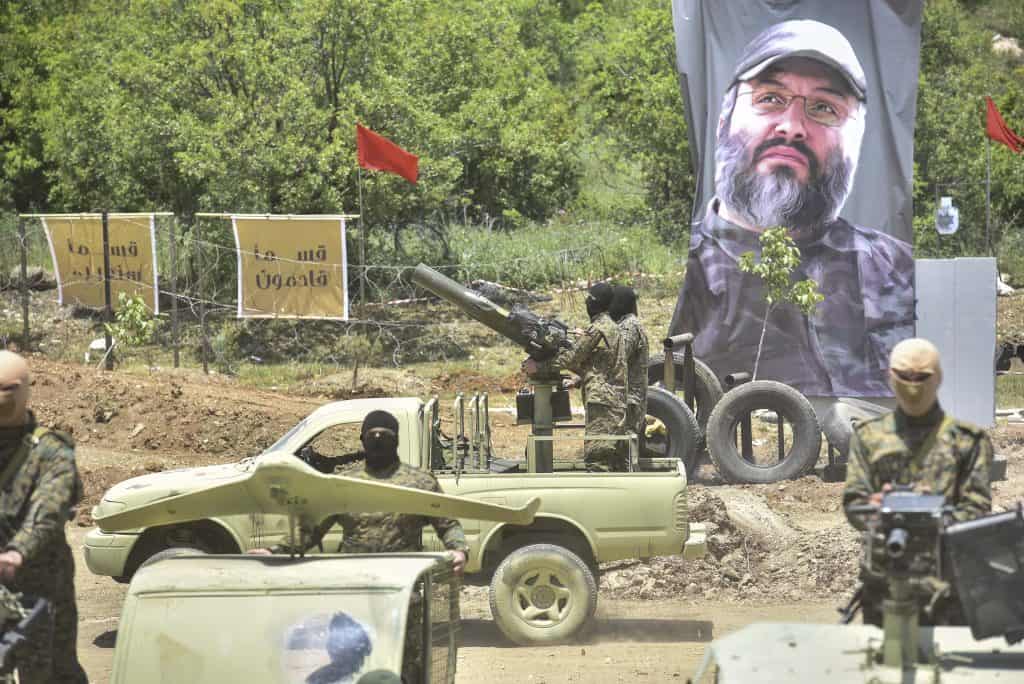
The dynamic nature of Israel’s northern border is being heavily influenced by the aggressive actions of Lebanese Hezbollah. Over the past thirteen months, a series of provocative acts and attacks have transpired, revealing the growing threat posed by Hezbollah. As initially reported by Roy Sharon and subsequently verified by FDD’s Long War Journal, the recent attempted targeting of IDF troops by Hezbollah on July 6 signifies an alarming escalation, highlighting the need for heightened vigilance in response to the precarious security situation on Israel’s northern border.
The recent targeting of IDF soldiers by Hezbollah serves as a clear indication of the Iranian proxy’s preparedness for a potential confrontation with Israel. This strategic move is part of a larger, comprehensive effort to disrupt Israel’s northern border region through various tactics, including kinetic action and the dissemination of controversial propaganda via Hezbollah’s media partners like al-Manar, al-Mayadeen, and its online platform, Central Military Media. As Hezbollah’s efforts continue to unfold, their multifaceted approach to destabilization poses a formidable challenge for the Israeli defense establishment.
Kinetic Attacks
While most of the events on the ground have occurred in the last six months, July 2022 should be considered the inception of Hezbollah’s shift in strategy.
On July 2, 2022, the Israel Defense Forces (IDF) destroyed three unarmed drones entering Israeli maritime waters. Following the launch, Hezbollah issued a communique claiming responsibility, saying the “required mission was accomplished and the message was delivered.”
The IDF said it downed another Hezbollah drone entering Israeli maritime waters four days later. Hezbollah did not issue a formal statement claiming responsibility. To add a propaganda element to the drone incidents, Hezbollah chief Hassan Nasrallah boasted about the capabilities of the so-called Islamic resistance during a speech on July 13, saying it can launch drones of “different sizes and in larger numbers” against Israeli targets.
In 2023, Hezbollah increased its attacks and instigated multiple incidents at Israel’s northern border.
On March 13, a Hezbollah operative crossed into Israel and planted a roadside bomb at Megiddo junction, injuring an Arab-Israeli driver. Israeli forces located the attacker and killed him after identifying that he was a “clear danger.”
In June, Hezbollah breached Israeli territory and established two tents manned by armed operatives. Following Israeli threats of an armed confrontation, one of the tents was dismantled, while the second remains standing. Following Israel’s threat, Hassan Nasrallah warned that Hezbollah would respond if the IDF were to attack the remaining tent. “If there’s any harm to the tent, we won’t stay quiet,” Nasrallah remarked.
On July 12, three Hezbollah operatives who attempted to breach the security fence on Israel’s northern border were wounded by a nonlethal explosion triggered by the IDF.
Propaganda Strategy
Although media headlines focus on Hezbollah’s kinetic activities, one should not disregard the propaganda aspect of the group’s newly adopted strategy.
Hezbollah closely monitors Israeli news outlets. The group and its media partners frequently translate and spread content that negatively portrays Israeli security and political affairs. For example, Hezbollah often reports terrorism against Israeli civilians to glorify the event. On July 2, Hezbollah posted several messages updating users on the rising casualty count following a terrorist attack in the West Bank settlement of Ma’ale Adumim.
Zionist media: The number of casualties as a result of the shooting operation in the vicinity of the “Ma’ale Adumim” commercial complex, east of Jerusalem, has increased to 5, in addition to the “neutralization” of the attacker.
Other notable media propaganda includes Hezbollah video publications depicting Hezbollah’s Radwan unit entering Israel and attacking an Israeli community. Lastly, Hezbollah’s most prominent on-the-ground media representation at the Lebanon border is presented through the propagandistic reports of journalists like Ali Shoeib from al-Manar.
An Old and Dangerous Pattern is Developing
The actions of Hezbollah that incite conflict resemble the tactics employed by Palestinian militant factions at the Gaza-Israel border in 2018 and 2019. Militant factions continuously assaulted the security fence, breached the buffer zone, deployed explosive devices, and launched assaults on unoccupied IDF military outposts. These border incursions persisted unabated and grew progressively more deadly, resulting in the casualties of both militants and Israeli forces. Gradually escalating, these occurrences eventually escalated into localized confrontations encompassing rocket barrages by Palestinian armed groups and retaliatory Israeli airstrikes within Gaza.
The escalation of aggressive rhetoric from both sides of the border is concerning. The prevailing political instability in Israel undeniably provides heightened confidence to Hezbollah and, to some degree, Iran, thereby fueling their inclination to seize opportunities during a perceived period of Israeli vulnerability.
Hezbollah’s actions along Israel’s northern border lack clear, tangible objectives. Still, it is plausible that a strategy is being employed to compel the Israeli military to exhaust its forces. At the same time, the IDF is already involved in operations within the West Bank, Syria, and sometimes in Gaza.
It’s clear by the pattern that has developed, Hezbollah has gained confidence in perpetrating aggressive acts. The question is “when will this boldness lead to a mistake, triggering a full-blown confrontation?”







